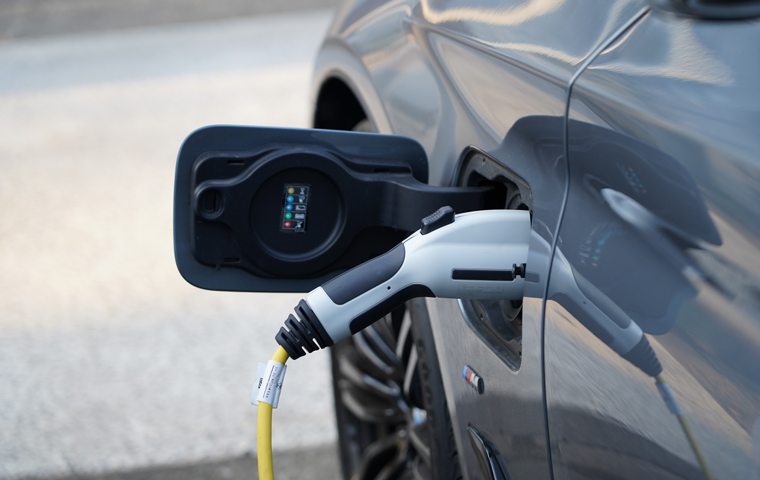Nissan on the Brink: The Future Entrusted to Its New Mexican CEO
Related Articles
Setting Sail Through the Storm: The Challenge of New CEO Iván Espinosa
On April 1, 2025, Nissan Motor Co., one of Japan’s automotive giants, reached a major turning point. Iván Espinosa, a 46-year-old executive from Mexico, was appointed as President and Chief Executive Officer (CEO). This appointment signifies far more than a routine change in leadership. For a company still struggling to recover from the turmoil and financial slump that followed the arrest of former Chairman Carlos Ghosn, it represents a generational shift and a decisive attempt to reform the company’s deeply rooted corporate culture.
Espinosa is not an outsider brought in to disrupt the system. Having joined Nissan Mexico at age 24, he has spent more than two decades devoted to the company—a true homegrown leader. His career has centered on global product planning and program management, the core of vehicle development. This focus suggests Nissan’s renewed determination to return to its origins: “creating cars that inspire desire.” After years of scandals and executive confusion, Nissan’s brand image was severely damaged. In this context, choosing a self-professed “car guy”—someone with genuine passion for automobiles—as CEO is a strategic move aimed at reviving employee morale and restoring consumer trust. Espinosa himself has said he fell in love with Nissan after seeing the iconic 300ZX as a child—his attachment to the brand runs deep.
But the reality awaiting him is brutally harsh. His predecessor, Makoto Uchida, was forced to step down after the company’s performance collapsed. For the fiscal year ending March 2025, Nissan recorded a massive net loss of 670.9 billion yen, a crisis comparable to the one that prompted Ghosn’s reforms a quarter-century ago. In his first interview after taking office, Espinosa declared, “If Nissan is not back in the black by fiscal 2026, I will step down.” This was not a mere statement of resolve—it was a calculated ultimatum. Uchida had expressed similar determination but resigned before achieving results; Espinosa’s declaration is both a commitment and a shock therapy intended to jolt Nissan’s rigid, empathy-lacking corporate culture into action and unify the organization around short-term survival.
Breaking from the Ghosts of the Past: The Structural Legacy of the Ghosn Era
Nissan’s current crisis did not arise overnight. Its roots trace back to Carlos Ghosn’s aggressive expansion strategy. As Espinosa himself noted, the core issue lies in the ambitious 2015 plan to achieve global sales of 8 million vehicles. Under this target, Nissan made massive overinvestments in production capacity and staffing worldwide. In reality, sales reached only 3.3 million units by 2024—less than half the goal—leaving the company burdened with excessive fixed costs and inefficient operations. In the U.S., factory utilization rates fell to around 66% in 2023, well below the 80% break-even point, revealing chronic structural weakness.
Ghosn’s 2018 arrest added governance turmoil to this structural crisis. Successor CEOs Hiroto Saikawa and Makoto Uchida struggled with the fallout from the Ghosn case, the COVID-19 pandemic, and global semiconductor shortages, all of which delayed fundamental reform. As a result, Nissan’s competitiveness eroded rapidly across key markets.
The collapse of both the Chinese and North American markets, once Nissan’s twin profit pillars, has been especially damaging. In China, the company missed the wave of price competition and local EV dominance; sales have fallen for six consecutive years, dropping 18.6% year-on-year in fiscal 2024 and forcing the closure of its recently built Wuhan plant. In North America, Nissan became trapped in a cycle of overreliance on sales incentives to maintain volume. The company’s strategic misstep became clear when rivals like Toyota and Honda sustained profits through high-margin hybrid (HV) sales, while Nissan—having prioritized early EV investment—lacked competitive hybrid offerings. This missing link in its product portfolio caused the North American business to plunge from a 241.3 billion yen profit to a 4.1 billion yen loss. The “volume-at-all-costs” mentality inherited from the Ghosn era eroded brand value and created a spiral of unprofitable growth.
“Re:Nissan” — A Bold Gamble for Survival

In response to this unprecedented crisis, Espinosa launched the “Re:Nissan” turnaround plan. Announced in May 2025, the plan aims to restore positive free cash flow in Nissan’s automotive operations by fiscal 2026 through sweeping, painful restructuring.
The plan rests on three pillars: cost structure reform, redefined market and product strategies, and strengthened partnerships. The most striking of these is cost reduction—Nissan targets an unprecedented 500 billion yen cut (250 billion in variable costs and 250 billion in fixed costs compared with fiscal 2024). To achieve this, the company will undergo its largest-ever restructuring, eliminating 20,000 jobs worldwide and consolidating its 17 vehicle assembly plants to 10 by fiscal 2027. The goal is to raise plant utilization from about 70% to nearly 100%. In Japan, production at the Oppama plant will end, signaling a willingness to reform without sacred cows. As Espinosa bluntly stated, “It would be irresponsible not to close factories.”
He also plans to overhaul development operations—reducing component counts by up to 70% and cutting the number of vehicle platforms from 13 to 7 by 2035—to boost efficiency. The company has already begun implementing the plan, reporting over 30 billion yen in fixed-cost reductions by July 2025. Still, the road ahead is steep: in the first quarter of fiscal 2025 (April–June), Nissan posted an operating loss of 79.1 billion yen and a net loss of 115.8 billion yen. The “Re:Nissan” plan is less a growth strategy than a defensive struggle to stop the bleeding. Only by enduring two years of grueling reform and achieving financial stability can Nissan earn the right to go on the offensive again.
The Road Ahead: North American Revival and the Future of Electrification

Espinosa’s leadership will ultimately be judged by success in two arenas: reviving the North American market and redefining Nissan’s electrification strategy for the future.
The first, North America, is personal terrain for Espinosa. As a Mexican national with extensive experience in Nissan’s global manufacturing hub there, his appointment clearly signals a mandate to rebuild North American operations. His plan is clear: move away from low-margin fleet sales and focus on profitable retail customers. At the same time, he intends to strengthen the hybrid lineup to compete head-on with Toyota and Honda. Encouragingly, Nissan recently ranked #1 among mass-market brands in J.D. Power’s 2025 U.S. Initial Quality Study (IQS)—a powerful endorsement that will aid in restoring brand image and reducing reliance on discounts.
The second front is electrification. Despite being a pioneer with the Leaf, Nissan failed to capitalize fully on its early lead. Under Espinosa, the company will adopt a flexible, market-based approach rather than an all-EV strategy. In North America, Nissan will respond to growing hybrid demand, while in China—where it has struggled—it plans to leverage local partnerships to develop New Energy Vehicles (NEVs) for export to markets such as the Middle East. This reflects a shrewd shift from domestic weakness to global supply strength.
Nissan will also continue technical collaboration with Honda, while exploring cross-industry partnerships to prepare for the Software-Defined Vehicle (SDV) era, where software defines automotive value.
Espinosa’s roadmap is arduous but precise. His leadership hinges on successfully executing the “Re:Nissan” reforms, achieving fiscal stability, and then winning the dual battles of North American recovery and pragmatic electrification—all within the two-year window he set for himself.
For Nissan, striving to rebuild independently after years under Renault’s shadow, this is the final test of survival as a truly global automaker. The fate of one of Japan’s industrial icons now rests in the hands of a “car guy” from Mexico—tasked with steering a storm-tossed ship toward renewal.



